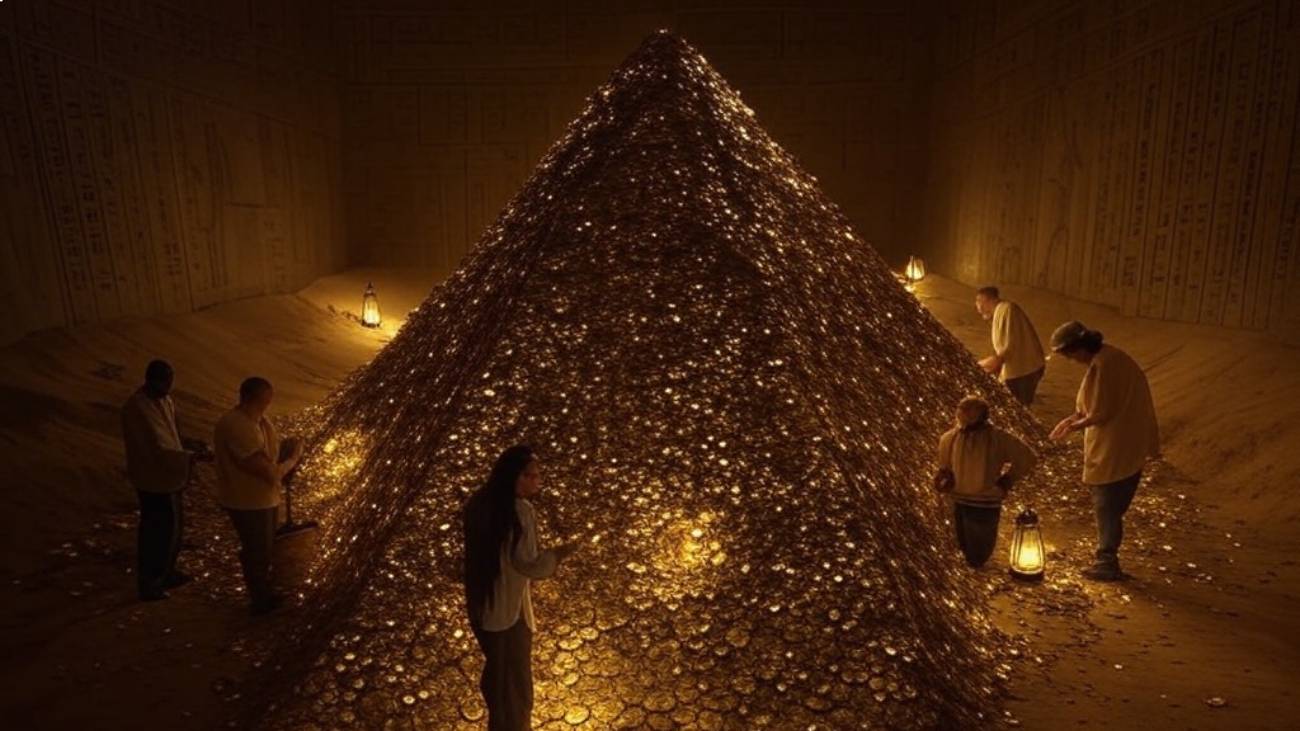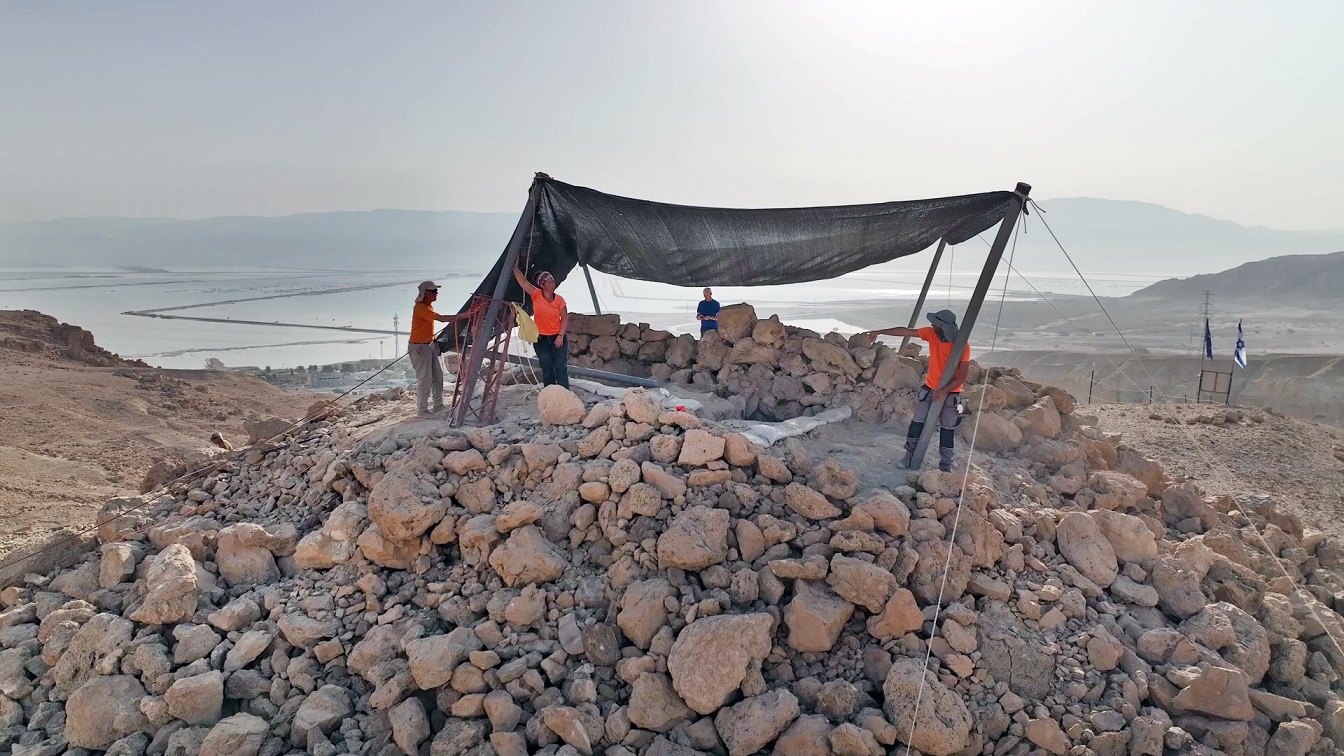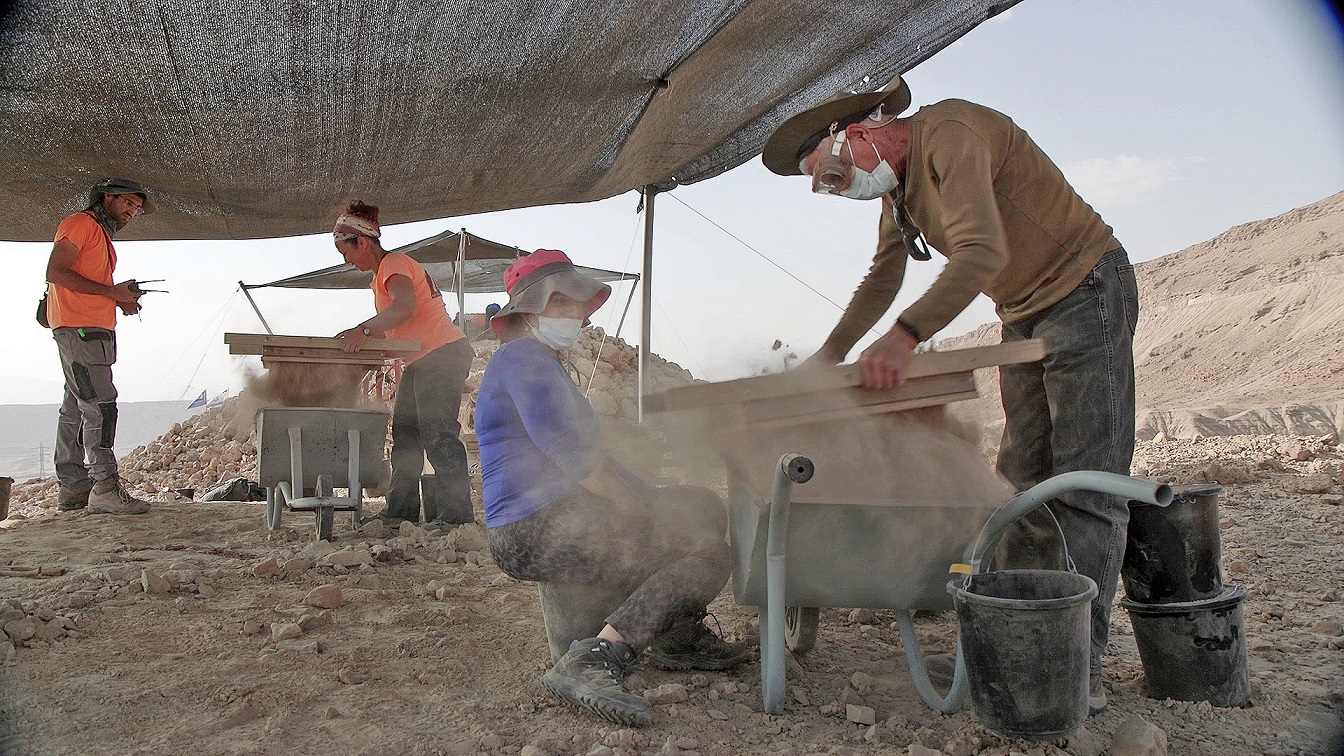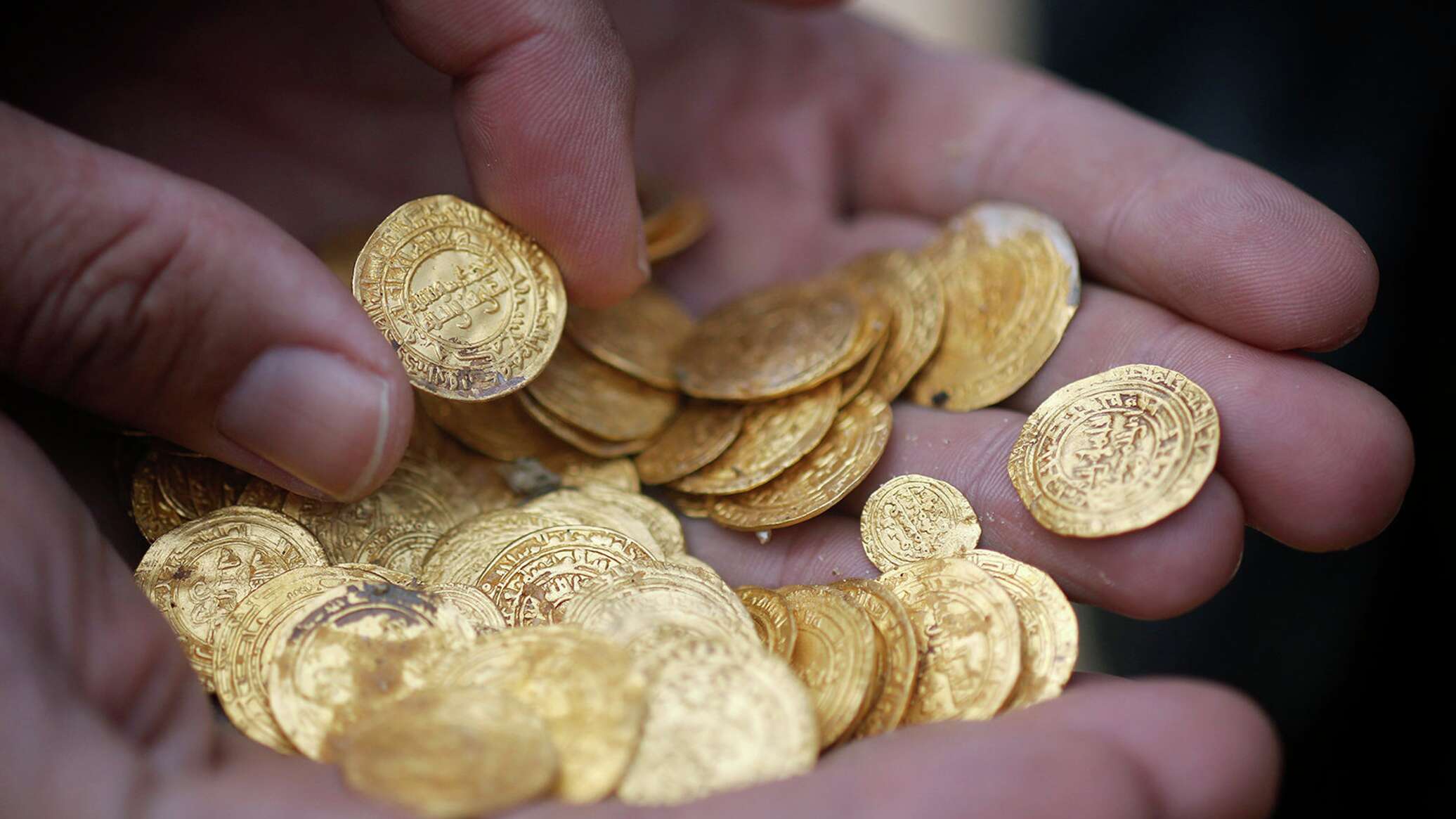The find is part of one of the richest and most archaeologically significant excavations ever seen in the Judean Desert. Nohal Zohar in the north of the Judean Desert is today the most talked-about archaeological site by the world’s archaeology community. An excavation carried out jointly by the Israel Antiquities Authority (IAA) and the Ministry of Heritage revealed a pyramidal structure dating back 2,200 years. The archaeological discovery of this pyramid marks a before and after in the findings in this area of Israel.

This unexpected archaeological find of various objects is now the subject of further research. The mystery surrounding the archaeological finds grows daily as they continue to surprise.

- 2,200-year-old pyramid structure
- Way station beneath the structure
- Papyrus documents written in Greek
- Bronze coins of the Ptolemies
- Bronze coins of Antiochus IV
- Weapons
- Wooden tools
- Fabrics
- Exceptional bronze vessels
- Remains of ancient furniture
- Parchments hidden in caves
- Papyrus fragments
- Wooden utensils
- Leather articles
- Treasures of coins
Matan Toledano, Dr. Eitan Klein and Amir Ganor, directors of the excavation, catalogued this archaeological discovery as one of the “richest and most interesting excavations ever found in the Judean desert”.
The mystery of the Judean desert takes hold after this discovery

This unmissable find in the Judean Desert, which revealed the enigmatic 2,200-year-old pyramid structure, still maintains the mystery of its function, the details of its purpose are still unknown.
The pyramid, initially attributed to the period of the First Temple, indicates that it was built during the Hellenistic rule, under the Ptolemies and Seleucids.
A discovery that changes everything we know about the Judean desert. Source: Archive.
This historical change raises questions: was it a watchtower on a key trade route, a monumental tomb or a symbol with another purpose? The excellent state of preservation of papyri, weapons and everyday objects adds value to the discovery. The excavation, which is still ongoing, promises to reveal more clues about this mysterious site lost in time.
The discovery of the pyramid in the Judean Desert rewrites the history of this area
This imposing 2,200-year-old pyramidal structure found in the Judean Desert is forcing archaeologists to rethink the history of the site.
“Contrary to previous hypotheses that attributed this structure to the First Temple period, it seems that it was built later, during the Hellenistic period,” say excavation directors Matan Toledano, Eitan Klein and Amir Ganor.
The find, in the Judean desert, which includes Greek papyri, Ptolemaic coins and everyday objects, suggests intense activity in the area under Ptolemaic and Seleucid rule. “This excavation changes the historical record of the site,” the experts say, revealing that the region was a strategic point much later than previously thought. The mystery of this archaeological discovery is only just beginning to be unraveled.









